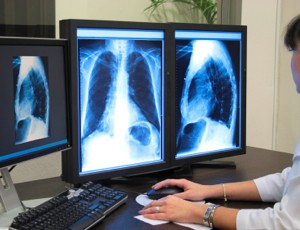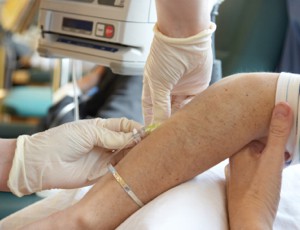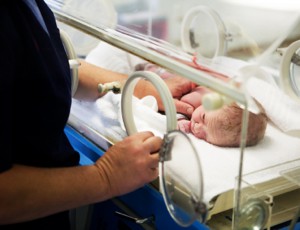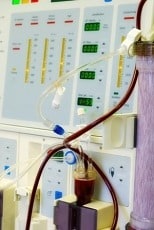Peripheral intravenous catheter needleless connector decontamination study

There was no difference in the effectiveness of 70% IPA and 2% CHG in 70% IPA for NC decontamination for peripheral intravenous catheters in the clinical environment” Slater et al (2020). Abstract: Background: Needleless connectors (NCs) were introduced to reduce health care work needlestick injuries (NSIs). If not decontaminated prior to use, NCs can be […]
Process for assessing products for infection prevention in health care settings

The CDC has been developing guidelines and recommendations to prevent and control health care–associated infections since the 1970s and with advice from HICPAC since the 1990s” Chopra et al (2020). Extract: The Healthcare Infection Control Practices Advisory Committee (HICPAC) is a federal advisory committee chartered to provide advice and guidance to the U.S. Department of […]
Infusion therapy in Parkinson’s Disease

Though controlled release forms of levodopa are available, they do not prevent or provide significantly prolonged benefit for motor complications [2,3]. This creates space for the development of infusion therapies” Prakash et al (2019). Extract: Motor complications result from the combination of multiple underlying factors. Reduced striatal dopaminergic terminal function plays a pivotal role in […]
Mechanisms of pain relief during venipuncture

“The easily performed “cough-trick” (CT) reduces pain during venipuncture (VP), although the underlying mechanism remains unclear” Usichenko et al (2019).
Double-chamber syringe versus classic syringes for drug administration and flushing

The development of this medical device (dual-chamber syringe, for drug and flush solution) seems to be an important step to facilitate nurses’ adoption of good clinical practices in intravenous procedures, reducing catheter manipulations” Parreira et al (2020). Abstract: BACKGROUND: The prevention of catheter-related complications is nowadays an important topic of research. Flushing catheters is considered […]
Calcification and abscess formation around central catheter tip

We report a case of calcification and abscess formation around a central venous catheter tip” Takami et al (2020). Abstract: BACKGROUND: Thrombosis of the internal jugular vein occasionally occurs in association with long-term placement of a central venous catheter; however, such complications rarely involve calcification within the blood vessels. We report a case of calcification […]
Alternatives to peripheral IV administration

This study monitors presence and complications of PVCs in a infectious disease (ID) unit of a tertiary care university hospital” Mailhe et al (2020). Abstract: The use of peripheral venous catheters (PVCs) is very common in hospital. After a visit to the emergency department, the literature finds that more of 75% of the hospitalized patients […]
Is mitoxantrone as a vesicant or irritant?

Mitoxantrone is a chemotherapeutic agent approved for various diseases. The literature has been conflicting in classifying mitoxantrone as a vesicant or irritant” Chang (2020). Abstract: Introduction: Mitoxantrone is a chemotherapeutic agent approved for various diseases. The literature has been conflicting in classifying mitoxantrone as a vesicant or irritant. Case report: We report a patient who […]
Venous thromboembolism in cancer patients

Patients with cancer-associated venous thromboembolism (VTE) represent a real challenge in clinical practice” Iorga et al (2019). Abstract: Patients with cancer-associated venous thromboembolism (VTE) represent a real challenge in clinical practice. Patients with cancer have a greater risk both of VTE and bleeding. There are only a few studies regarding the therapeutic approach of VTE […]
Mid-thigh cannulation of the superficial femoral vein

The technique of femoral inserted central catheters insertion via the superficial femoral vein at the mid-thigh has a high success rate, low complication rate, and less impact on activities, and is easy to maintain” Zhao et al (2019). Abstract: PURPOSE: Patients needing medium- to long-term infusion therapy with limited catheterization via the superior vena cava […]
Effect of cold and hot compress on the site of doxorubicin extravasation

In the present study, we investigated a part of the mechanism responsible for the effects of hot and cold compresses for extravasation of doxorubicin” Miura et al (2019). Abstract: In the present study, we investigated a part of the mechanism responsible for the effects of hot and cold compresses for extravasation of doxorubicin. We injected […]
Differences in CLABSI rates based on central line days

Central line–associated bloodstream infection (CLABSI) rates are an important quality performance indicator associated with patient morbidity, mortality, and increased costs” Scheinker et al (2020). Abstract: Central line–associated bloodstream infection (CLABSI) rates are an important quality performance indicator associated with patient morbidity, mortality, and increased costs. Hospital CLABSI rates are tracked, reported, and tied to reimbursement […]
Risk factors for PICC complications in neonates

Approximately one-third of PICCs were associated with complications. When feasible, lower extremity PICCs should be placed as they may be associated with fewer complications” Pet et al (2020). Abstract: OBJECTIVE: To determine factors associated with nonelective PICC removal and complications. STUDY DESIGN: Overall, 1234 PICCs were placed in 918 hospitalized infants
FUSION IV Pharmaceuticals issues voluntary nationwide recall of all sterile drug products

FUSION IV Pharmaceuticals, Inc dba. AXIA Pharmaceutical is voluntarily recalling all unused sterile drug products within expiry” FDA (2019). FDA report “FUSION IV Pharmaceuticals, Inc dba. AXIA Pharmaceutical is voluntarily recalling all unused sterile drug products within expiry, to the user level, due to a lack of assurance of sterility. The recalled sterile products have […]
Catheter tip location of totally implantable venous access port

The purpose of our study is to compare the reliability and consistency of three commonly used techniques, which are surface measurement, intracardiac electrocardiogram (IECG) and tracheal bifurcation methods in measuring the tip location of totally implantable venous access port (TIVAP) in the same patient” Li et al (2019). Abstract: BACKGROUND: The purpose of our study […]
Thromboresistant hydrogel for vascular access applications

This high-strength thromboresistant hydrogel could have a major impact as a novel biomaterial for use in vascular access applications to improve patient health” Mannarino et al (2020). Abstract: Adherence of proteins, cells, and microorganisms to the surface of biomaterials used for vascular access contribute to device failure by thrombosis, occlusions, and infections. Current technologies for […]
Review of different central venous catheter replacement methods

Ectopic catheter replacement can improve the primary patency rate and auxiliary primary patency rate of catheters. Ectopic catheter replacement may require sufficient surgical skills with digital subtraction angiography, resulting in a better prognosis” You et al (2019). Abstract: INTRODUCTION: Central venous catheter insertion for long-term vascular access is not recommended in clinical practice. However, since […]
How to approach central venous catheter safety?

CVCs may be associated with insertion-related, mechanical, thrombotic, and infection-related complications that, in turn, are associated with higher mobidiity and mortality, and increased healthcare costs” Levy et al (2019). Extract: Central venous catheters (CVCs), including nontunneled CVCs, peripherally inserted central catheters (PICCs), and tunneled or implanted central access devices, are commonly used in pediatrics for […]
Enhanced infection control interventions reduce neonatal CRBSI

Catheter-related bloodstream infections (CR-BSI) cause high neonatal mortality and are related to inadequate aseptic technique during the care and maintenance of a catheter. The incidence of CR-BSI among neonates in Hung Vuong Hospital was higher than that of other neonatal care centres in Vietnam” Phan et al (2020). Abstract: Background: Catheter-related bloodstream infections (CR-BSI) cause […]
PICC use in allogeneic hematopoietic stem cell transplant recipients

We have prospectively evaluated the safety and efficacy of 100 polyurethanes or silicone PICC, inserted into 100 adult allo-HSCT recipients, at the Hematology of Sapienza University of Rome (Italy), between October 2012 and August 2017″ Mariggiò et al (2020). Abstract: BACKGROUND: Central venous catheters (CVC) are essential for the management of patients with hematologic malignancies, […]
Performance of modern syringe infusion pump assemblies at low infusion rates

The aim of this study was to evaluate the performance of several modern syringe infusion pumps at low infusion rates and the impact on drug concentration” Baeckert et al (2019). Abstract: BACKGROUND: Syringe infusion pumps are used for the precise continuous administration of intravenous drugs. Their compliance and mechanical deficiencies have been found to cause […]
Early mortality attributable to PICC-lines

We report in our study an exhaustive inventory of bacteremia on PICC-line and their 30 days mortality, over a 7 years period” Bessis et al (2020). Abstract: INTRODUCTION: Peripherally inserted central catheters (PICC-line) are devices inserted through peripheral venous access. In our institution, this technology has been rapidly adopted by physicians in their routine practice. […]
Achieving equity in dialysis care and outcomes

Inequities in nephrology referral, vascular access, use of home dialysis modalities, kidney transplantation, and mortality are prominent” Crews and Novick (2020). Abstract: Socially disadvantaged persons, including racial and ethnic minorities, individuals with low incomes, homeless persons, and non-US citizens bear a disproportionate burden of end-stage kidney disease (ESKD). Inequities in nephrology referral, vascular access, use […]
Target controlled infusion algorithm to prevent hypotension associated with labor epidural

The purpose of this study was to design an adaptive optimal controller for an infusion system to regulate mean arterial pressure” Davoud et al (2019). Abstract: Patients receiving labor epidurals commonly experience arterial hypotension as a complication of neuraxial block. The purpose of this study was to design an adaptive optimal controller for an infusion […]
Peripherally inserted central catheter service review

To document the evolution of the Peripherally Inserted Central Catheter service at Princess Margaret Hospital, now Perth Children’s Hospital” Hauser et al (2019). Abstract: BACKGROUND: To document the evolution of the Peripherally Inserted Central Catheter service at Princess Margaret Hospital, now Perth Children’s Hospital. METHODS: Between January 2012 and June 2013 patients referred to Anaesthesia […]
Micropuncture access set use during port implantation

The aim of this study was to compare the perioperative outcomes when using a micropuncture access set (MS) to those when using a conventional puncture set (CS) for implantation of totally implantable venous access device (TAVID)” Lee et al (2019). Abstract: BACKGROUND: The aim of this study was to compare the perioperative outcomes when using […]
What is the effect of bundles on high CLABSI rates?

Modified CVC bundles were implemented across all settings of our hospital” Karapanou et al (2020). Abstract: Background: Our hospital has several characteristics different from the settings in which the central venous catheter (CVC) care bundle has been implemented so far, that is, care bundles or protocols are not systematically used, and the prevalence of central […]
Fluid resuscitation with albumin using BET formula

In conclusion, BET formula is capable of resuscitating burn patients successfully, limiting fluid administration” Blanco-Schweizer et al (2019). Abstract: BET (Biological Engineering Technology) formula uses fluids with high albumin concentration to resuscitate burn patients. It estimates fluid resuscitation as a function of Body Burned Surface Area (BBSA) (ml/h = BBSA (m2) × 220) and administers it through a combination […]
Clinical management of hemophilia A in females

Affected individuals should receive infusion training and education on treatment options, physical activities, the importance of treatment adherence, and recognizing bleeding symptoms warranting treatment” Bryant et al (2019). Abstract: Approximately 50% of female carriers of hemophilia A have factor VIII (FVIII) levels below 0.5 IU/dL and may be categorized as having mild hemophilia. Females with […]
Diagnosis and management of catheter-related bloodstream infections

Treatment of inpatients may involve central venous catheter removal and antibiotics for patients needing short-term parenteral nutrition, but catheter salvage is generally recommended for patients needing long-term parenteral nutrition, where appropriate” bond et al (2019). Abstract: Catheter-related bloodstream infections (CRBSIs) commonly arise from a parenteral nutrition catheter hub. A target for a Nutrition Support Team […]

